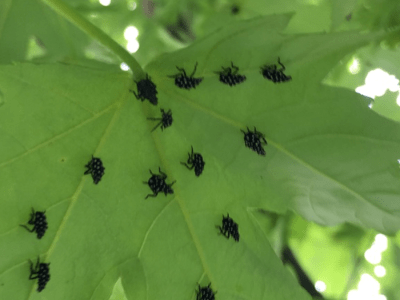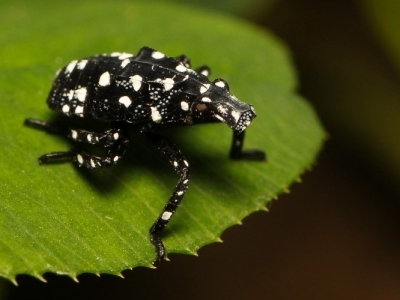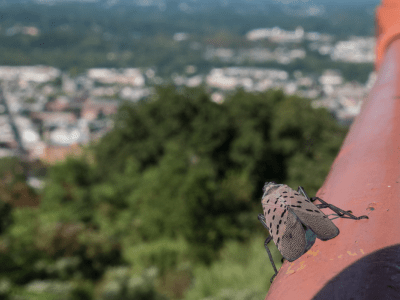Spotted Lanternfly
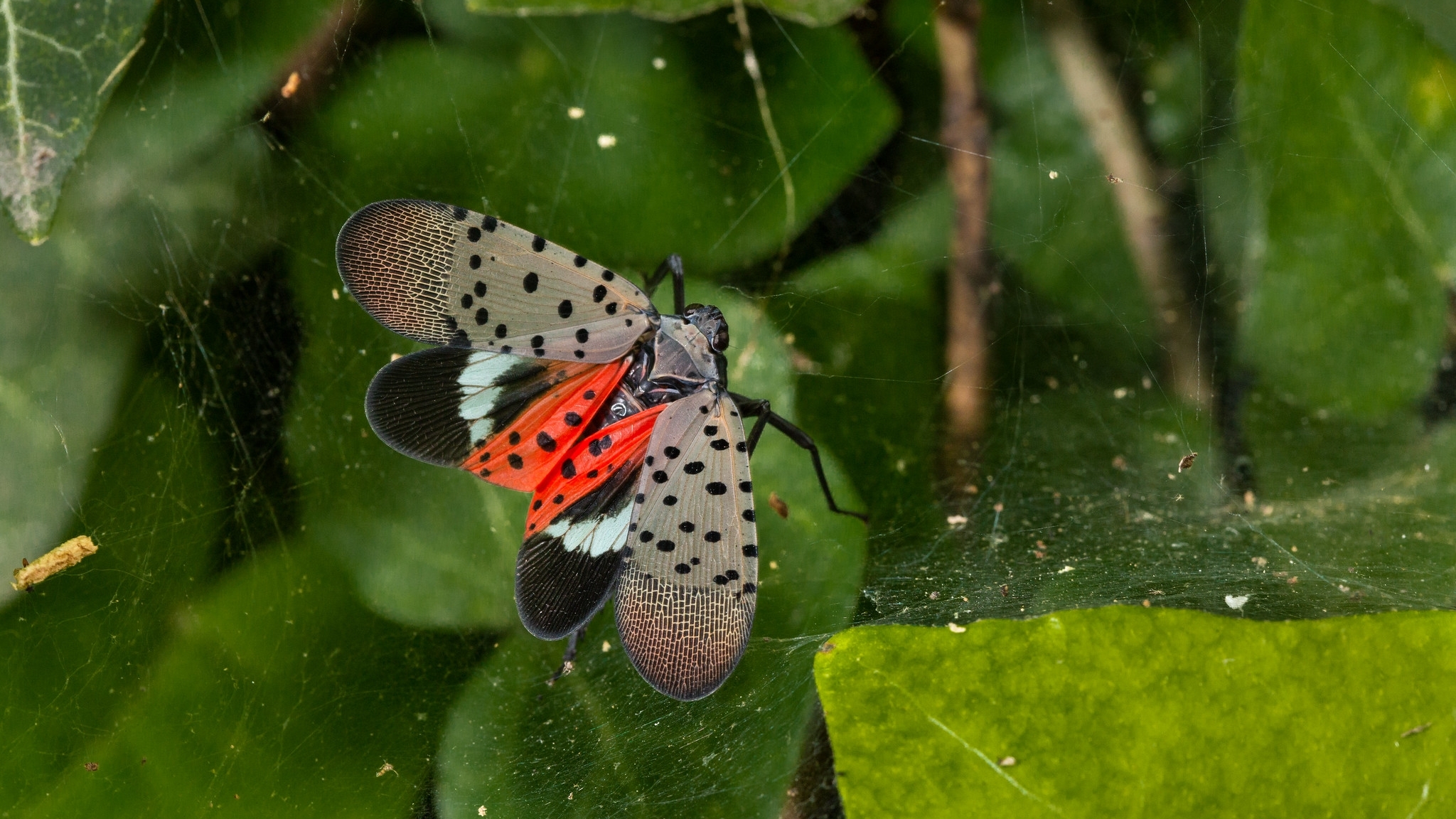
Spotted lanternfly (Lycorma delicatula) is an invasive planthopper that feeds on a wide range of plants, including grapes, hops, stone fruits, and hardwood trees. When the spotted lanternfly feeds, it excretes a sticky, sugary fluid that causes sooty mold, which can further damage plants. Its preferred host is tree of heaven (Ailanthus altissima), and today 18 States have some degree of infestation.
The spotted lanternfly is a hitchhiking pest that is native to Asia. It lays its eggs on any hard surface including grills, vehicles, trailers, firewood, outdoor furniture, bikes and toys. The pest was first detected in 2014 in Pennsylvania. It likely arrived in the United States on goods shipped from overseas.
The spotted lanternfly can harm our fruit and forest industries. Early detection is a critical step to mitigating economic and ecological losses. Residents in SLF quarantine areas should check outdoor items before traveling to new areas. Here's what to look for (2.75 MB):
- Appearance
- Nymphs (juvenile spotted lanternflies) are black with white spots and turn red as they develop.
- Adults, roughly 1-inch long and 1/2-inch wide, have a yellow, black-barred abdomen. With large, visually striking wings, adult spotted lanternflies can be easier to spot than other pests. They have brown forewings with black spots at the front and a speckled band at the rear. Their hind wings are scarlet with black spots at the front and white and black bars at the rear.
- Eggs
- Newly laid egg masses (holding 30-50 eggs) resemble wet, gray putty before turning dull and brown, mirroring a smear of cracked mud. The 1-inch long egg masses can be seen in fall, winter, and spring on a variety of smooth surfaces, such as trees, bricks, stones, fences, grills, equipment, and vehicles.
- Newly laid egg masses (holding 30-50 eggs) resemble wet, gray putty before turning dull and brown, mirroring a smear of cracked mud. The 1-inch long egg masses can be seen in fall, winter, and spring on a variety of smooth surfaces, such as trees, bricks, stones, fences, grills, equipment, and vehicles.
- Oozing sap
- When spotted lanternflies feed on plants, they leave behind a sticky, oozing residue called honeydew. This substance attracts other insects, causes mold growth, and further hurts plants.
- Fermented odor
- As honeydew ferments, it can develop an intense, rotten smell.
- Tree-of-heaven
- One of the best places to look for these pests is on a tree-of-heaven, a favorite plant for spotted lanternflies. The tree has a cantaloupe-like texture, with bark that appears light brown to gray. The leaves are large, 1 to 4 feet in length. These leaves are made up of many smaller leaflets on both sides of a central stem.
- Habits
- Spotted lanternflies (both nymphs and adults) frequently gather in large numbers when feeding. They're easiest to spot at dusk or at night as they migrate up and down the trunk of a plant. During the day, they tend to cluster near the base or canopy of a plant, making them more difficult to see.
Not sure if you've found a spotted lanternfly? Check out our spotted lanternfly lookalikes guide (2.83 MB) or browse our photo galleries on Flickr and below.
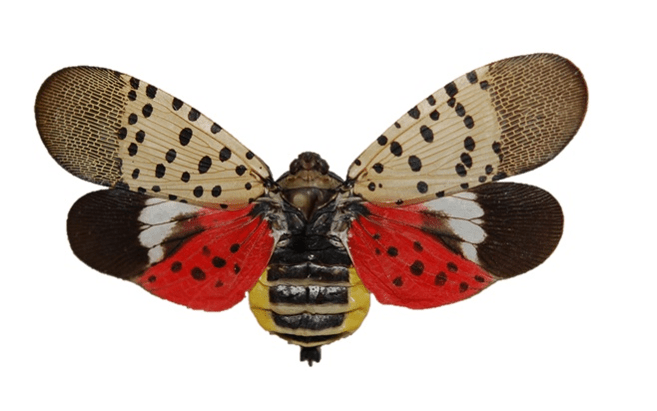

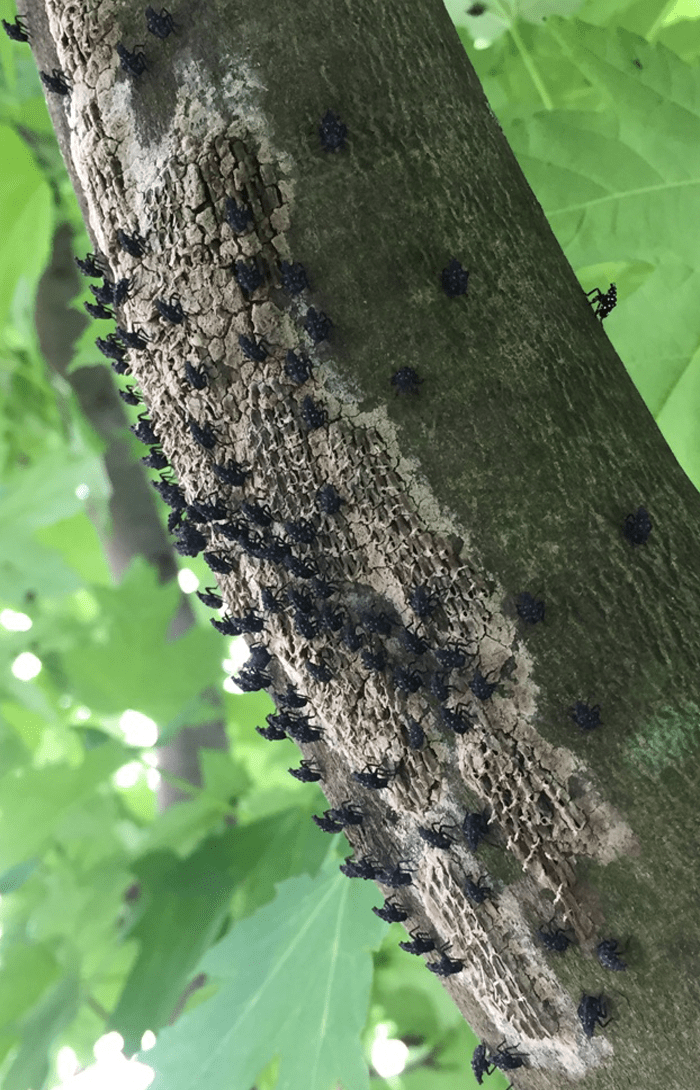

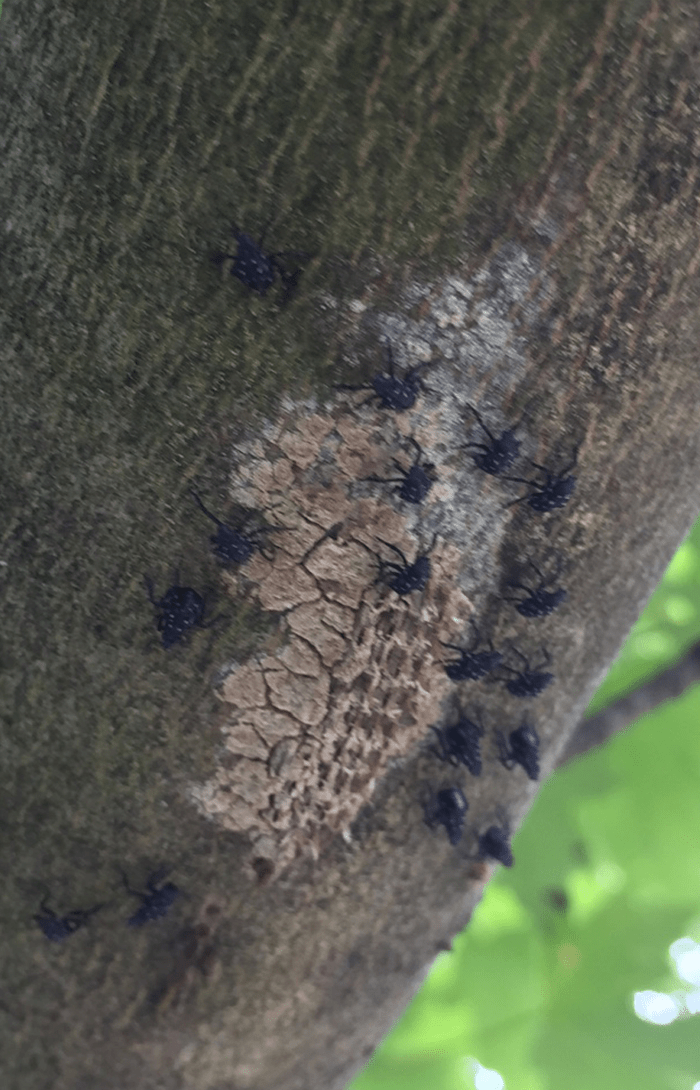
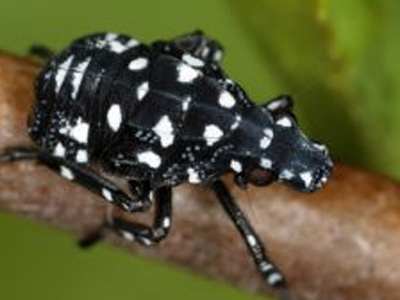


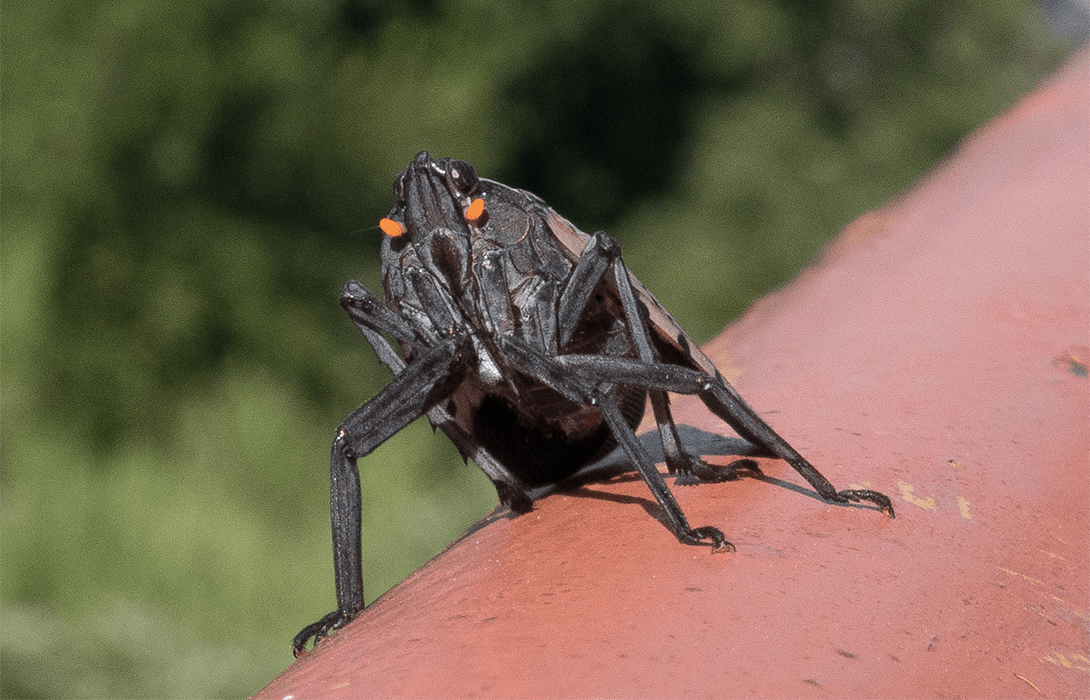

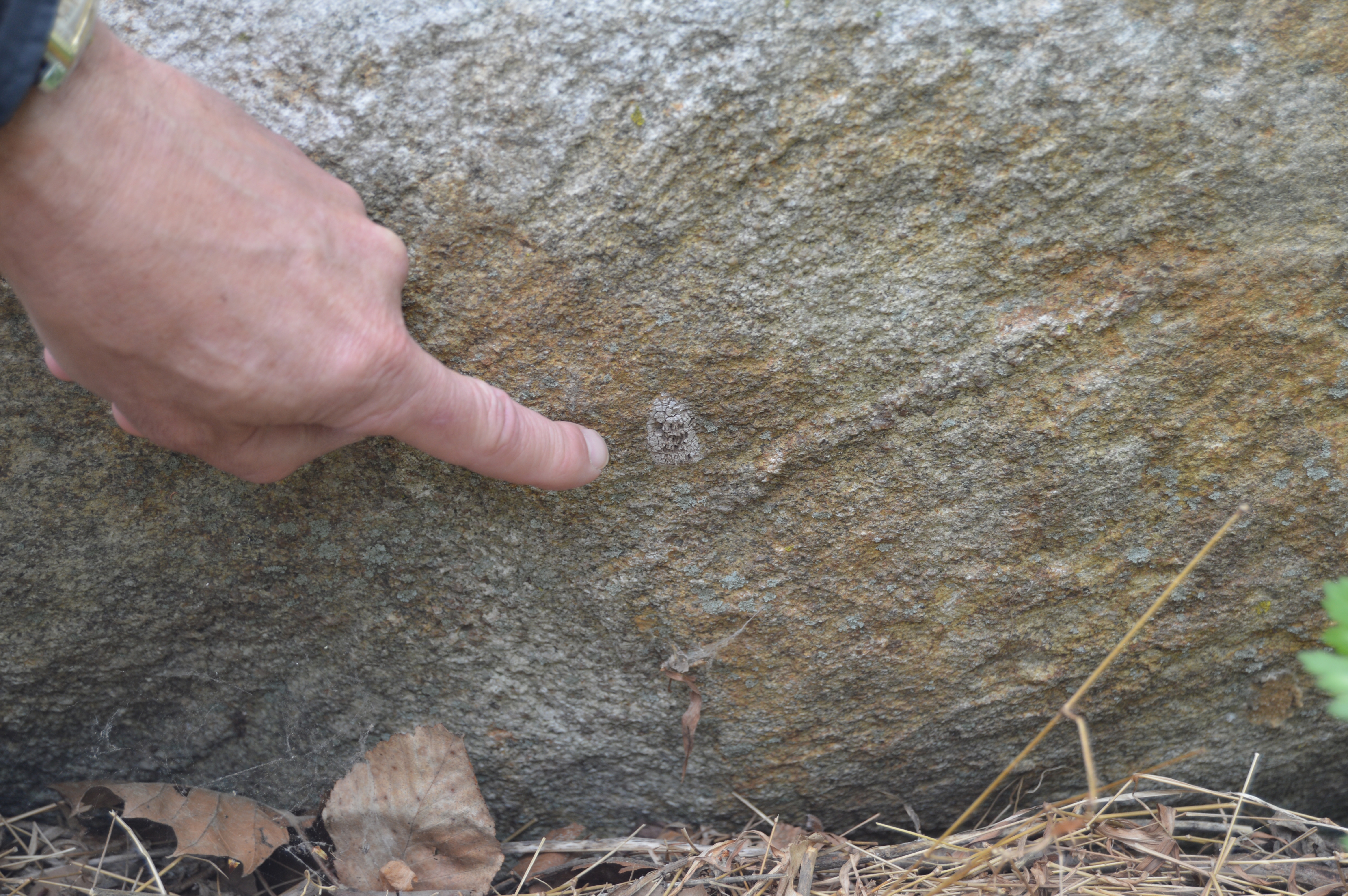
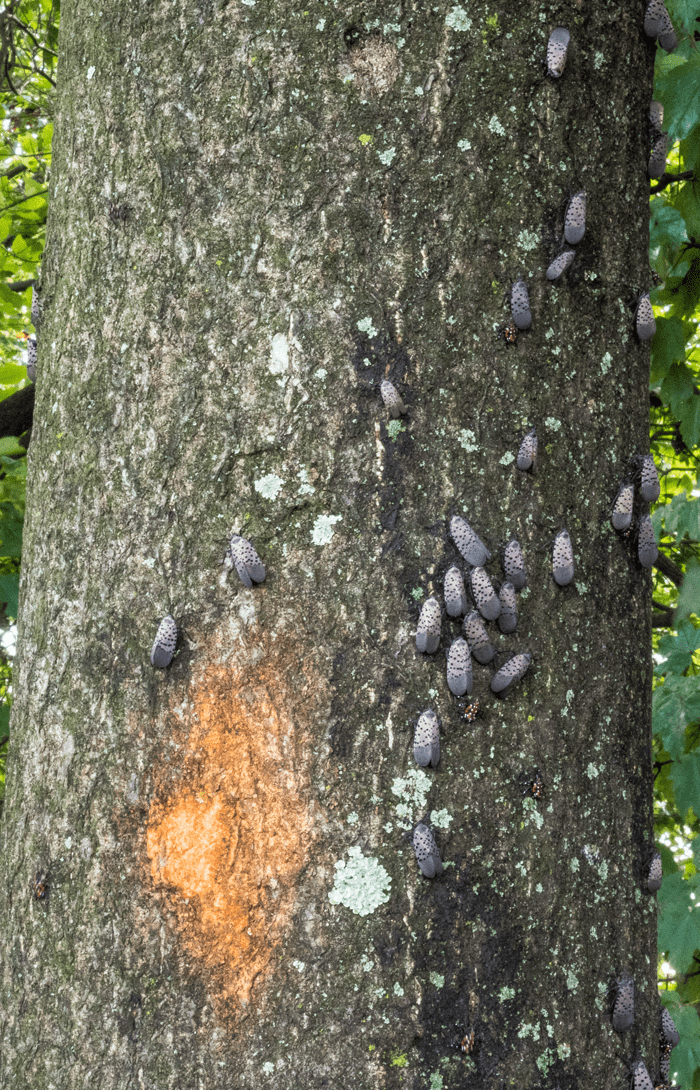
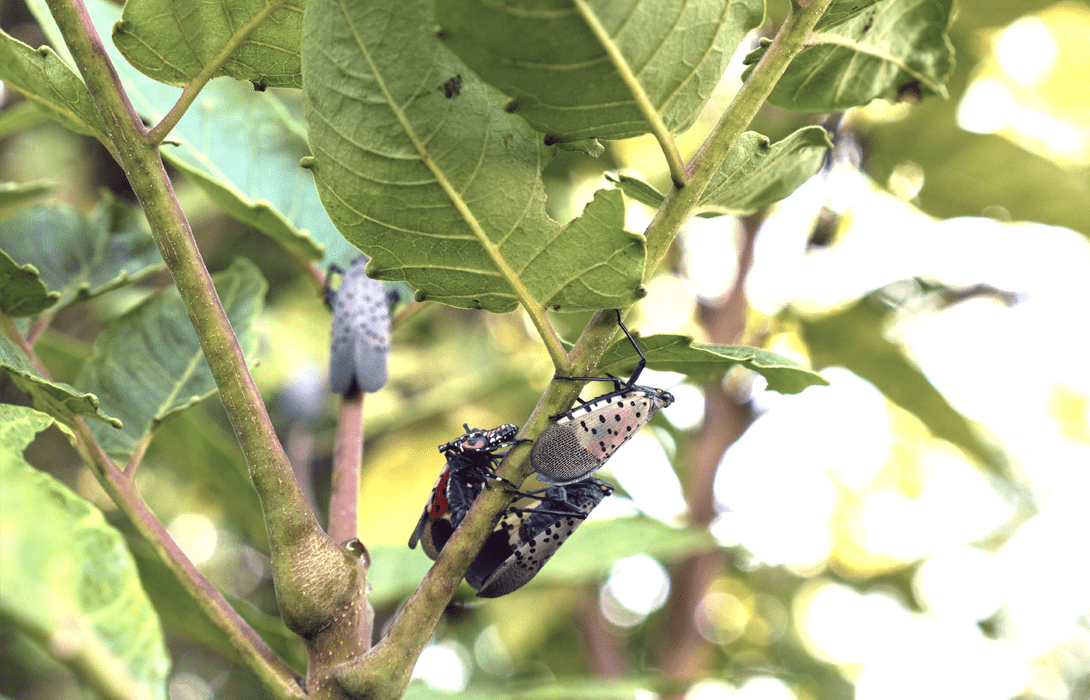

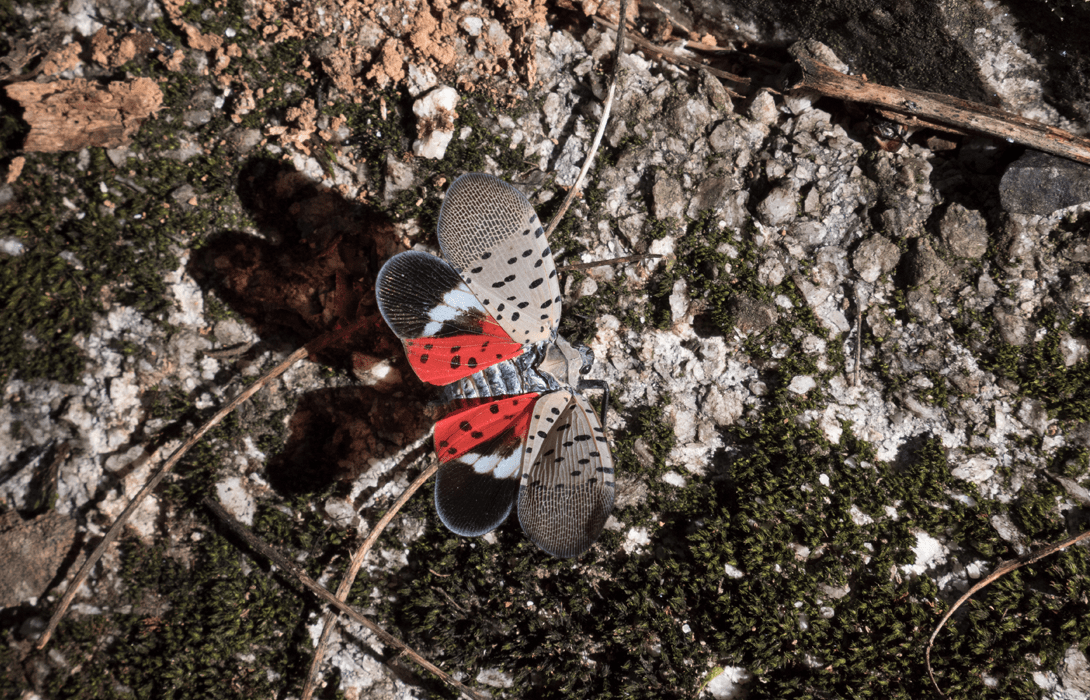
1st through 4th instar spotted lanternfly nymphs (Credit: Pennsylvania Department of Agriculture)
Spotted lanternfly nymphs (Credit: Greg Setliff, Kutztown University)
Spotted lanternfly nymphs (Credit: Greg Setliff, Kutztown University)
Spotted lanternfly nymphs emerging from egg mass (Credit: Greg Setliff, Kutztown University)
Early instar
Adult spotted lanternfly back.
Adult spotted lanternfly front
Adult spotted lanternfly laying eggs.
Spotted lanternfly egg mass
Cluster of spotted lanternfly adults and nymphs
Adult spotted lanternflies
4th instar spotted lanternfly nymph (Credit: itchydogimages)
Adult spotted lanternfly wings
You can stop the spotted lanternfly from overtaking plants:
- Regular Checks: Inspect your trees and plants for signs of this pest, particularly at dusk and at night when the insects tend to gather in large groups on trunks and stems.
- Close Car Windows: Spotted lanternflies and their nymphs can enter vehicles unsuspectedly. When parked, make sure to keep windows closed. If possible, try to park 15 feet away from trees in a quarantine zone.
- Check Your Vehicle: Before leaving a parking lot or work site, inspect vehicles for eggs or insects. Check doors, sides, bumpers, wheel wells, grills, and roofs. If found, destroy any eggs or insects you find.
- Winter Prep: When preparing for winter, check your outdoor items for egg masses, including items you may bring indoors.
- Destroy Eggs: Look for egg masses in your trees (in particular, tree-of-heaven), bricks, stones, and other smooth surfaces. If you find eggs, smash them (325.72 KB) and scrape them into a plastic zippered bag filled with hand sanitizer or rubbing alcohol to kill them. Then, zip the bag shut and dispose of it in the trash.
- Know Your Zones: If you're traveling through a quarantine area, thoroughly check your vehicle and clothes to avoid moving the pest from a quarantine area to your land and other locations.
- Inspect Items Being Moved: If your business involves moving items, check shipping containers, propane tanks, pallets, and other items being stored outdoors before they're moved offsite. Inspect incoming goods for egg masses and insects.
Contact your local Cooperative Extension Agent for advice and options to control spotted lanternfly.
Report Plant Pests and Diseases
Have you seen this pest or signs of pest damage? Immediately report your findings.
Find your State plant regulatory official
Find your State plant health director
Controlling Spotted Lanternfly
Spotted lanternfly populations are in 18 States: Connecticut, Delaware, Georgia, Illinois, Indiana, Kentucky, Maryland, Massachusetts, Michigan, New Jersey, New York, North Carolina, Ohio, Pennsylvania, Rhode Island, Tennessee, Virginia, and West Virginia. Several States have quarantine areas in place to help stop the pest's spread. Quarantine zones may be expanded if new infestations are detected.
We are working with State and Tribal cooperators to detect, control, and manage spotted lanternfly populations in the United States. If allowed to spread, this pest could impact our country’s fruit, ornamental, and forest industries. Early detection is critical to prevent economic and ecological losses. The public has played a key role in detecting spotted lanternfly. Stopping its spread depends on help from the public to look for and report signs of the pest.
- Hungry Pests
- Pest Alert: Spotted Lanternfly (English and Spanish)
- Spotted Lanternfly Activity Sheets for Kids
- Spotted Lanternfly Checklist for Residents
Videos
- Look Before You Leave (English) :30 video
- Businesses Can Help Stop the Spread of Spotted Lanternfly (English) 2:09 video
- Businesses Can Help Stop the Spread of Spotted Lanternfly (Spanish) 2:12 video
- Look and Report Spotted Lanternfly (English) 2:00 video
- Look and Report Spotted Lanternfly (Spanish) 1:56 video
External Resources
- Spotted Lanternfly Management Guide for Homeowners (PennState Extension)
- Spotted Lanternfly Website (PennState Extension)
Downloadable Materials for Businesses
Use the following free materials to alert your team about the spotted lanternfly and how they can help stop it.
- Poster (10"x13") – Email to company members and post where truck drivers/delivery personnel can see it.
- Truck Driver Checklist (8.5" x 11", double-sided, laminate, 3-hole punch on left-hand side) – Ask drivers to refer to the checklist every time before leaving your site.
- Employee Parking Lot Sign (24"x 18", double-sided, 30" H-stakes) – Post at parking lot exits to remind drivers to check their trucks.
- Truck Bumper Sticker/Signs (2.74" x 8.25") – Show the public your support of spotted lanternfly control efforts.
- Window Sign (4" x 4") – Use this in a retail window to show your support.





